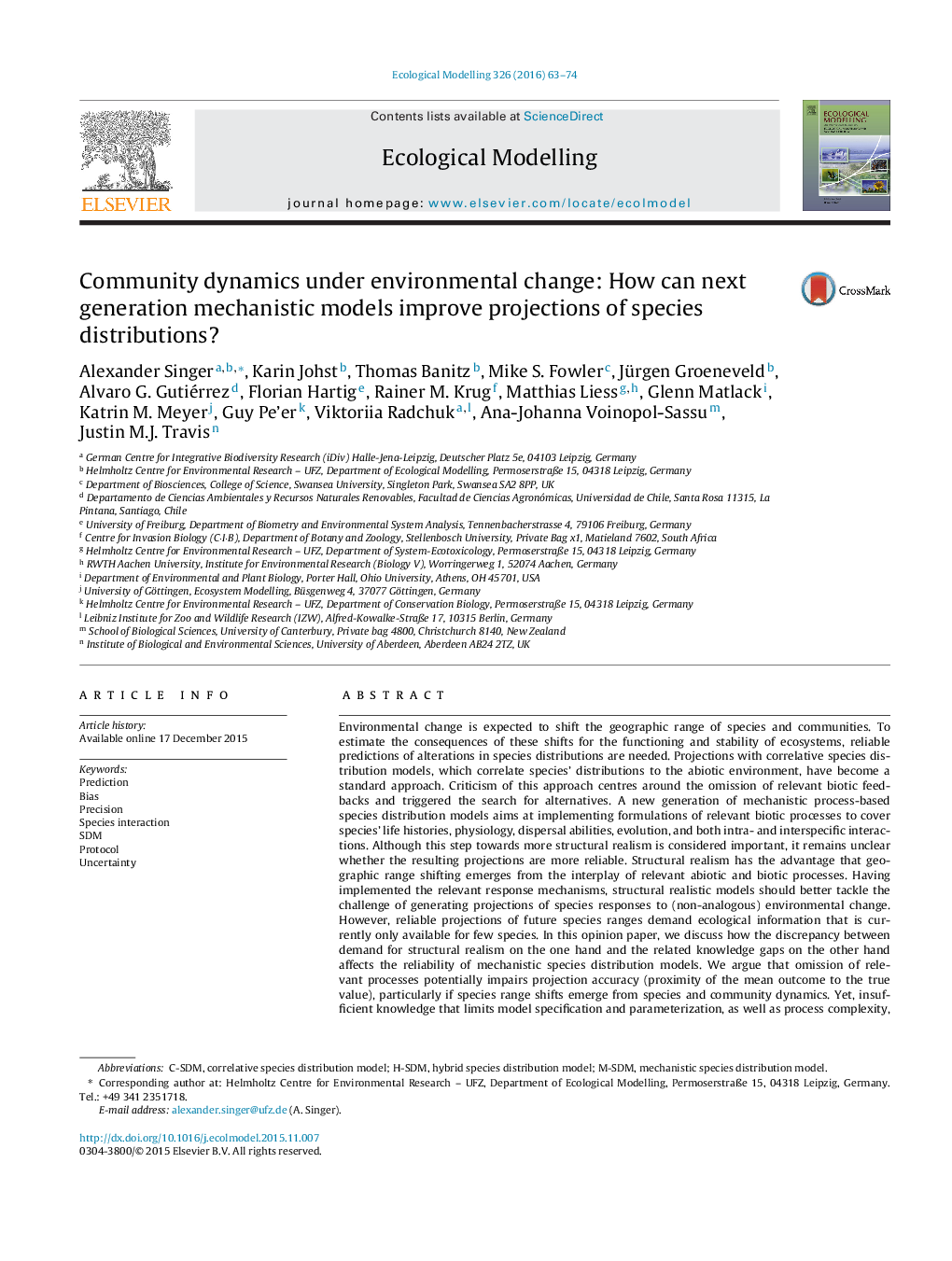| کد مقاله | کد نشریه | سال انتشار | مقاله انگلیسی | نسخه تمام متن |
|---|---|---|---|---|
| 6296339 | 1617421 | 2016 | 12 صفحه PDF | دانلود رایگان |
- Biotic processes are considered in mechanistic species distribution models.
- Projection reliability is limited by inherent variability and lacking knowledge.
- Relevant processes can enhance accuracy but increase uncertainty, if under-informed.
- To enhance reliability, a proposed protocol joins empirical and modelling research.
- The protocol reveals process relevance, knowledge gaps and guides future research.
Environmental change is expected to shift the geographic range of species and communities. To estimate the consequences of these shifts for the functioning and stability of ecosystems, reliable predictions of alterations in species distributions are needed. Projections with correlative species distribution models, which correlate species' distributions to the abiotic environment, have become a standard approach. Criticism of this approach centres around the omission of relevant biotic feedbacks and triggered the search for alternatives. A new generation of mechanistic process-based species distribution models aims at implementing formulations of relevant biotic processes to cover species' life histories, physiology, dispersal abilities, evolution, and both intra- and interspecific interactions. Although this step towards more structural realism is considered important, it remains unclear whether the resulting projections are more reliable. Structural realism has the advantage that geographic range shifting emerges from the interplay of relevant abiotic and biotic processes. Having implemented the relevant response mechanisms, structural realistic models should better tackle the challenge of generating projections of species responses to (non-analogous) environmental change. However, reliable projections of future species ranges demand ecological information that is currently only available for few species. In this opinion paper, we discuss how the discrepancy between demand for structural realism on the one hand and the related knowledge gaps on the other hand affects the reliability of mechanistic species distribution models. We argue that omission of relevant processes potentially impairs projection accuracy (proximity of the mean outcome to the true value), particularly if species range shifts emerge from species and community dynamics. Yet, insufficient knowledge that limits model specification and parameterization, as well as process complexity, increases projection uncertainty (variance in the outcome of simulated model projections). The accuracy-uncertainty-relation reflects current limits to delivering reliable projections of range shifts. We propose a protocol to improve and communicate projection reliability. The protocol combines modelling and empirical research to efficiently fill critical knowledge gaps that currently limit the reliability of species and community projections.
Journal: Ecological Modelling - Volume 326, 24 April 2016, Pages 63-74
